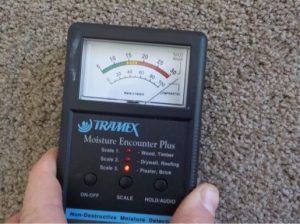June 2020 -New Construction (Practical Completion)
Their are many types of damp and several causes of damp conditions that can affect building elements.
Some of the causes of damp can be from rain penetration, rising damp, leaks from plumbing pipes, lateral damp, missing flashings, broken roof tiles, capillary action or deteriorated building elements.
Structural damp can lead to unwanted moisture in the structure of a building. If left untreated it can result in a number of structural issues as well as pose potential health risks.
Unmanaged damp facilitates the formation and development of mould, fungi growth and wood rot. This can lead to decay to building materials such as exterior roof timbers ultimately compromising structural integrity in the home. Chemical and biological degradation of materials also occurs as a result of damp, humidity and moisture. Damage to surface finishes is likely to occur if exposed to moisture, including lifting, bubbling, peeling and staining of paint, plaster and wallpaper as well as ceiling damage and possible collapse.
As the World Health Organisation notes excess moisture can lead to growth of microbes. Bacteria and fungi emit spores and other matter into the indoor air. Exposure to these contaminants is associated with a wide range of respiratory and other health-related problems such as asthma.
Additionally, the development of damp in timber building elements also provides an environment that is conducive to termite and timber pest attack. Termites are attracted to areas of high moisture such as leaking taps and air conditioning over flows. Identifying and rectifying these problems reduces risks to damp and moisture in and around the property. Engaging a qualified Next Level Building and Timber Pest Inspector is important to locate these potential risks.
The below images were taken at a newly constructed (Practical Completion Inspection) home in Perth. Mould and wet carpet due to a noted roof plumbing leak was evident. Following our findings and report the Builder was obligated to relay the carpet in the master bedroom due to the high amount of mould forming under the carpet. Due to the high amount of moisture present the timber skirting started to swell and part from the wall. Replacement of the skirting and repainting of the affected area was required.




